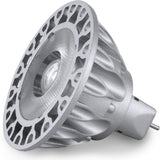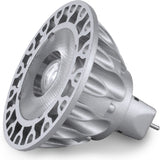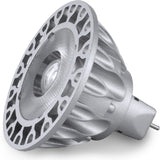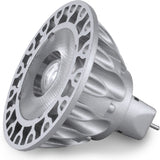Museum Exhibits - Why Are Some So Dark?
Posted by Nick on for ProLampSales
This past weekend, I was at the Field Museum in Chicago and wandered into some of the leas populated, darker exhibits that the museum houses. Both the Ancient Americas and Pacific Spirits exhibits are quiet and dark, featuring clothing and art from these cultures. A much more popular exhibit on Ancient Egypt is similarly dimly lit for the most part.
But why are these exhibits so dark? The dinosaur exhibit is brightly lit, popular, and wide open, but these cultural history exhibits are exactly the opposite. Where lights are always on in the dinosaur section, some lights are motion-activated in the American Indian and Pacific Islands areas. And the corridors are fairly narrow, helping guide visitors from one piece to the next.
The reason for this is that light can damage old artifacts. Dinosaur bones -- real or replicas -- are much hardier and resistant to the effects of light damage (after all, they've survived millions of years of much more destructive natural phenomena). Clothing or wooden masks made with natural paint can become faded and damaged with too much exposure to light - artificial or sunlight.
Dyes are especially damaged by light, as colors can fade permanently. With some artifacts in a museum having been collected in the 1800s, by the time we see them in 2014, they may already be a poor representation of the original piece's colors. This is why museums dim the lights in these exhibits. Although even that will not save the objects entirely, it can extend the life of the original dyes, preserving colors without having to undertake restoration work or retire the piece permanently.
Another easily noticeable aspect of these exhibits was the very "warm" light that was used, especially when only motion sensors activated lights at all. This is because orange filters are more protective of objects, as they filter out the blue part of the spectrum. Of course, seeing everything with a red/orange hue further distorts the color the objects, resulting in sub-optimal color rendering.
If harmful ultraviolet light and even blue light can be filtered out, the pieces more susceptible to damage can be displayed and enjoyed by the public for years and decades to come.
"Seeing versus saving" is an important concept for museum curators. So, next time you find yourself at a museum and feel that it's too dark in a certain section, remember how much effort has been put into the lighting just to protect the objects. Too much light over time will fade colors faster, cause weakening of materials, and heats up artifacts making them hotter than the optimum temperature for preservation.
One exception to this general rule is exhibits featuring minerals. The minerals may fluoresce under various types of ultraviolet light, so visible light may be reduced in these areas and UV light directed towards the rocks. This helps visitors enjoy the unique properties of the minerals, where too much visible light may make it harder to see the mineral fluorescence. But minerals, gems, and rocks are not as susceptible to light damage as paint or dyes.
LED light bulbs hold promise for museums and art galleries, as they can filter out more of the ultraviolet and blue parts of the spectrum, and their cooler operation overall removes heat exposure. LEDs, though, have their own challenges, as using them in enclosed fixtures like some exhibit display cases may impact their ability to dissipate heat, resulting in lower LED life.
One particularly disturbing thing I came across was a person shining a bright LED flashlight straight into exhibits to see them better. Hopefully, knowing that blue light is more destructive than the warm light used in these exhibits, you won't do the same! There's always a dinosaur bone or submarine to check out if you prefer brighter exhibits over darker ones.
- Posted in Design, Museum & Art Gallery
Featured Products (View All)
0 Comments




